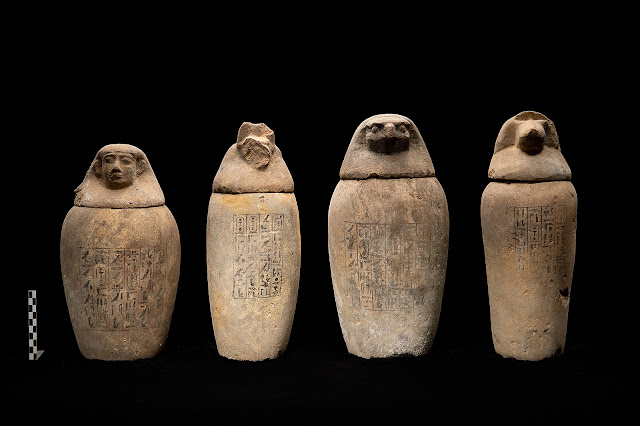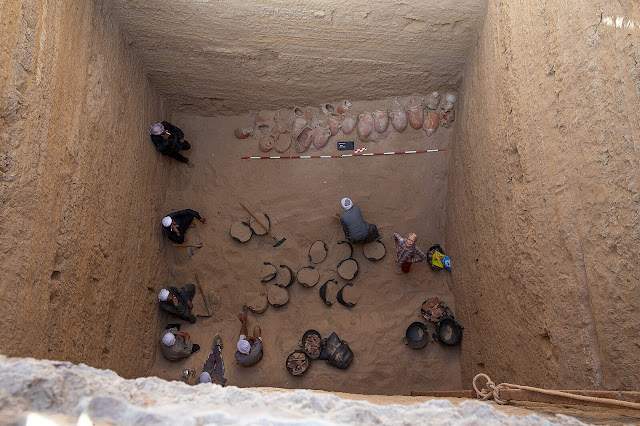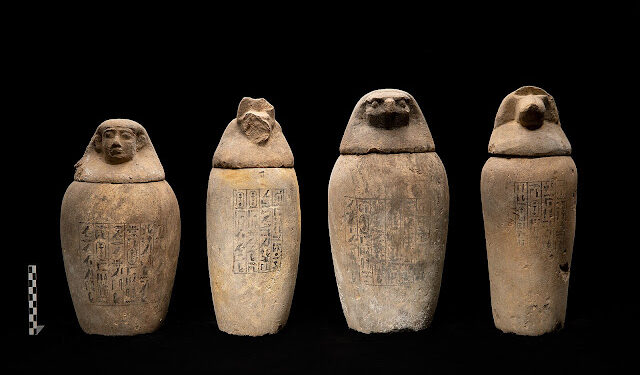Excavators from the Czech Institute of Egyptology at the Charles University in Prague have unearthed the largest cachette of ancient Egyptian embalming materials ever recovered in Egypt during routine excavations at the site of Abusir, 30 kilometers north of the Giza Plateau.

“It is probably the largest and most complete artifact found in ancient Egypt, including 370 large ceramic storage vessels and several smaller artifacts,” said Deputy Director of Mission Mohamed Megahed.
He claimed the vessels stored remnants or residues of various materials or utensils used during the mummification process in ancient Egypt.

The vessels were arranged in 14 clusters at depths ranging from four to twelve meters below the surface, with the sides of the shaft connected in a spiral manner. There were 7-52 vessels in each cluster.
Four engraved canopic jars made of limestone were discovered in the topmost set of vessels, all of which were empty and unused. According to the inscriptions on them, the jars belonged to a certain Wahibre-Mery-Neith, son of the Lady Irturu.
“The season of 2021 was part of a long-term project to unearth and interpret monuments dating to a period when Greek, Persian and Nubian armies challenged Egypt after they had been seeking new ways to preserve its unique identity,” said Miroslav Bárta, the mission’s director.
“The shaft tomb of Abusir, modeled after the famous tomb of Pharaoh Zoser, the founder of the Old Kingdom, played an important role in the unique cultural expression used by the Egyptian at the time.”, he said.
“Identifying the owner of the canopic jars is still difficult as different mothers are confirmed for all of them.”

The investigation of the burial complex at the bottom of a massive central shaft will continue. Modern scientific procedures are being used to analyze the containers and their contents.
Osiris was the ancient Egyptian god of the dead and resurrection, and Abusir means “House of Osiris.” During the rule of King Userkaf, the Fifth Dynasty’s founder, who erected a magnificent solar temple there, it became a royal burial site.
At Abusir, some of his successors erected their burial and sun temples. At the end of the Fifth Dynasty, king Menkauhor built the last temple.























